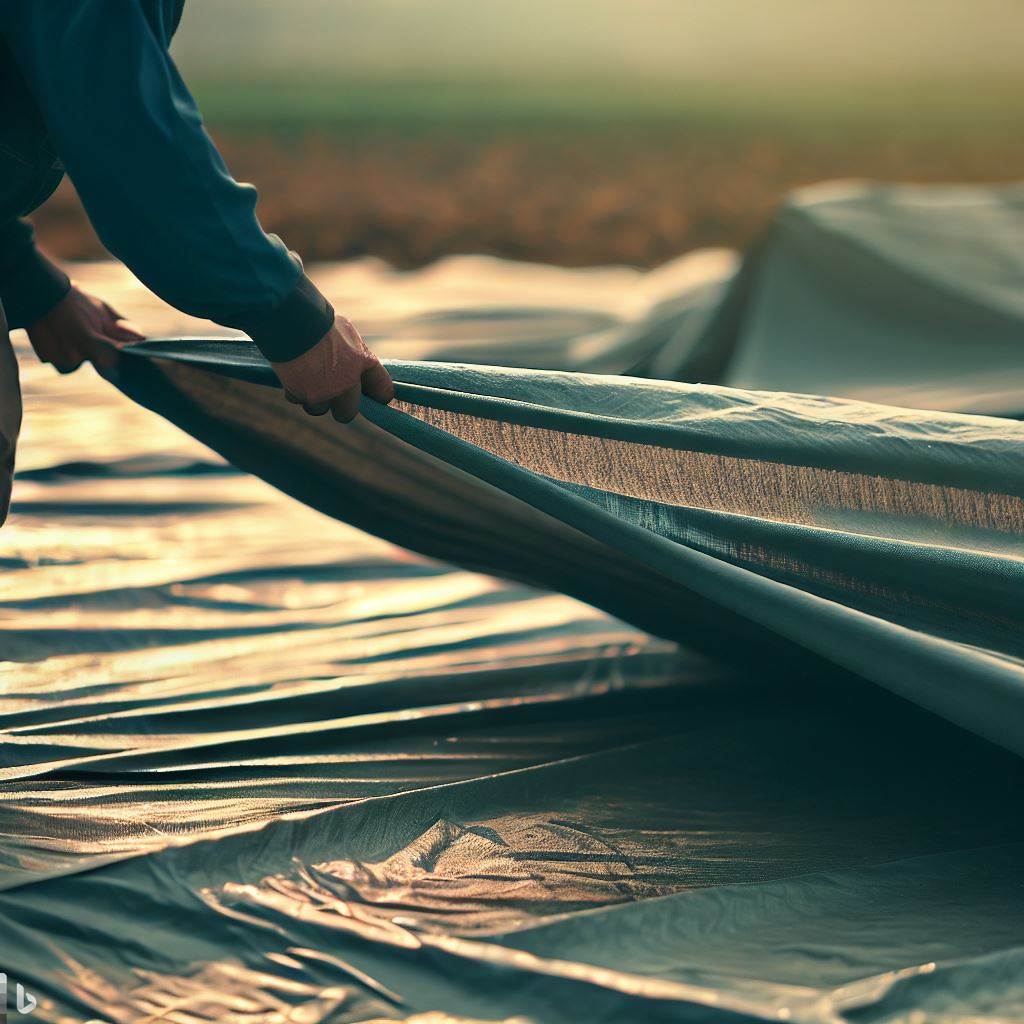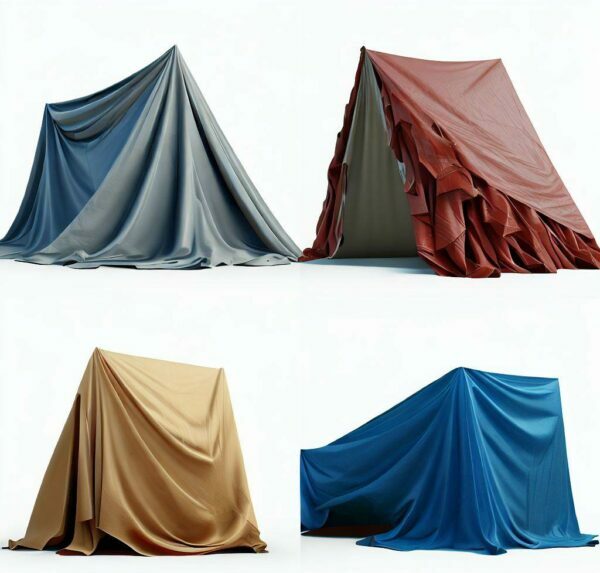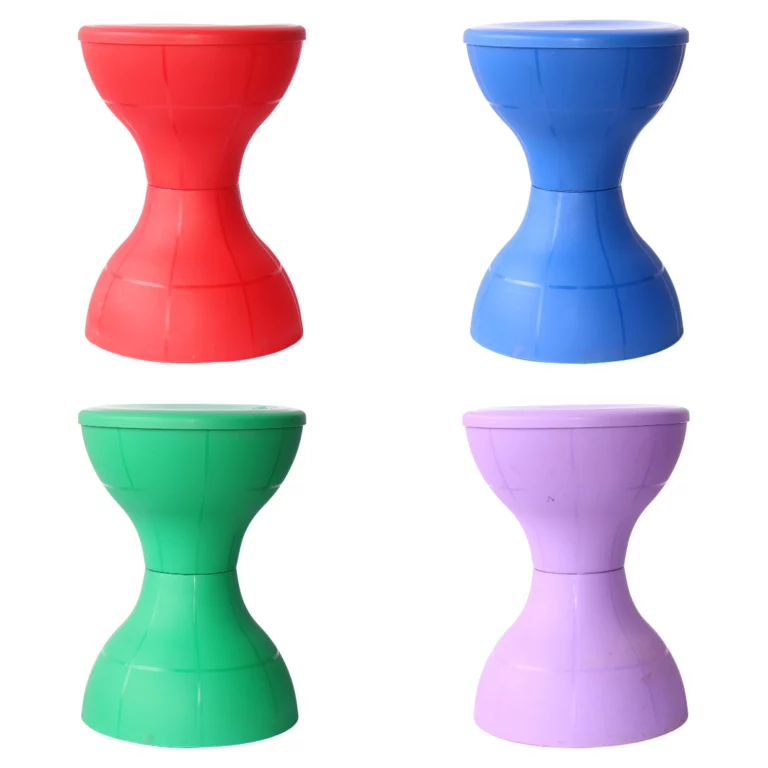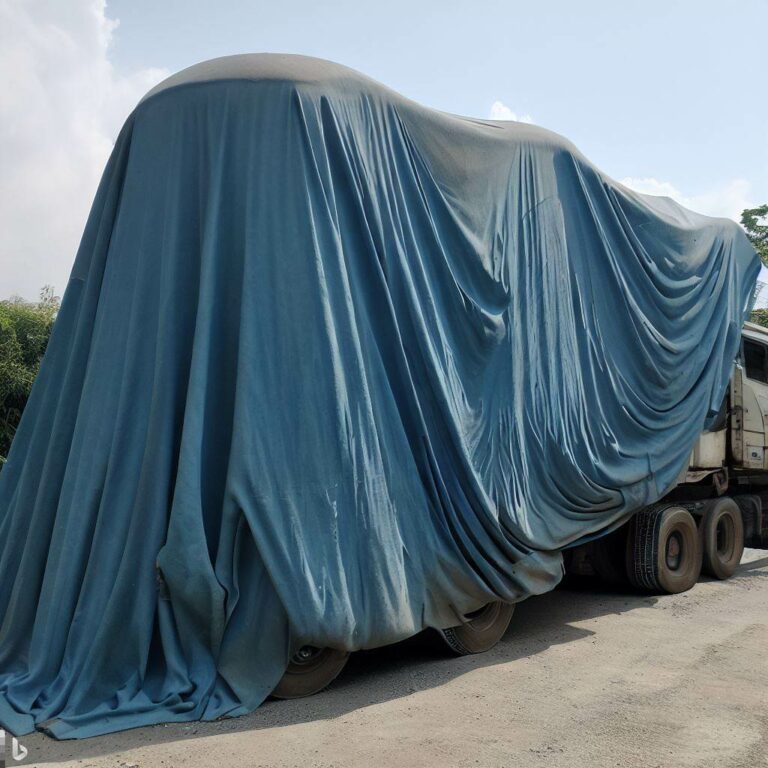Tarpaulin for Agriculture 101: The Ultimate Guide

Tarpaulins, commonly referred to as tarps or covers, are robust and flexible sheets composed of different materials like polyethylene, canvas, PVC, or mesh.
Related: What is Tripal/Tarpaulin? Beginner’s Guide to Tripal
They serve as a shield to safeguard objects from weather conditions, dust, and external influences. Over time, tarpaulins have increasingly gained favor in the field of agriculture, owing to their myriad advantages in protecting crops, facilitating storage, and promoting growth.
Let’s explore the different aspects of tarpaulin for agriculture in detail.
Types of Tarpaulins

Tarpaulins used in agriculture come in different types based on the material used in their construction. The most common types of tarpaulins used in agriculture are:
Polyethylene tarpaulins
These are made of high-density polyethylene (HDPE) or low-density polyethylene (LDPE) and are lightweight, waterproof, and UV resistant. They are cost-effective and widely used for crop protection, storage, and greenhouse farming.
Canvas tarpaulins
These are made of heavy-duty canvas fabric, usually made of cotton or polyester, and are known for their durability and breathability. They provide excellent protection against weather elements and are commonly used in livestock and poultry farming.
PVC tarpaulins
These are made of polyvinyl chloride (PVC) coated fabric and are known for their high strength, waterproofing, and chemical resistance. They are suitable for heavy-duty applications and are commonly used in aquaculture and fish farming.
Mesh tarpaulins
These are made of high-density polyethylene (HDPE) or polypropylene (PP) mesh fabric and are known for their excellent ventilation and light transmission properties. They are used in horticulture and floriculture for shading, windbreak, and pest control purposes.
Each type of tarpaulin has its unique characteristics and is suitable for specific agricultural applications based on the crop type, growth stage, and environmental conditions.
Benefits of Using Tarpaulins in Agriculture
The use of tarpaulins in agriculture offers several benefits that contribute to improved crop quality, yield, and overall agricultural practices. Some of the key benefits of using tarpaulins in agriculture are:
Protection against weather elements
Tarpaulins act as a shield against adverse weather conditions such as heavy rainfall, extreme temperatures, and strong winds. They help in maintaining optimal temperature and humidity levels for crops, protecting them from frost, hail, and excessive sunlight.
Pest and disease control
Tarpaulins provide a physical barrier that helps in preventing the entry of pests, insects, and diseases into the crop area, reducing the need for chemical pesticides and herbicides. This promotes healthier crop growth and minimizes the risk of crop loss due to pest infestations.
Enhanced crop growth and yield
Tarpaulins create a controlled environment that promotes faster and healthier crop growth. They help in optimizing light penetration, reducing evaporation, and preventing nutrient leaching from the soil, resulting in higher crop yields and improved quality of produce.
Water conservation
Tarpaulins for agriculture helps in reducing water consumption by minimizing evaporation from the soil and conserving irrigation water. They also prevent rainwater runoff, allowing for efficient use of water resources and promoting sustainable farming practices.
Reduction of chemical usage
The use of tarpaulins in agriculture can significantly reduce the dependence on chemical fertilizers, pesticides, and herbicides, as they provide a natural and chemical-free barrier against pests, diseases, and weeds. This contributes to environmentally friendly and sustainable agricultural practices.
Cost-effective and sustainable solution
Tarpaulins are a cost-effective solution for crop protection and storage, as they are durable, reusable, and require minimal maintenance. They also contribute to sustainable agriculture by conserving resources, reducing chemical usage, and minimizing environmental impact.
Applications of Tarpaulins for Agriculture
Tarpaulins find various applications in agriculture, ranging from small-scale farming to large commercial operations. Some of the common applications of tarpaulins in agriculture include:
Greenhouse and polyhouse farming
Tarpaulins are extensively used in greenhouse and polyhouse farming to create a controlled environment that promotes optimal crop growth.
They are used as covers for greenhouse structures, providing protection against weather elements, pests, and diseases, and allowing for precise control of light, temperature, and humidity.
Crop protection and storage
Tarpaulins are used as covers for crop fields to protect crops from adverse weather conditions, pests, diseases, and weeds. They are also used as covers for storage structures, such as silos, barns, and sheds, to protect harvested crops from moisture, pests, and spoilage.
Livestock and poultry farming
Tarpaulins are used in livestock and poultry farming for shelter, shade, and protection against weather elements. They are used as covers for animal sheds, pens, and enclosures, providing a safe and comfortable environment for the animals.
Aquaculture and fish farming
Tarpaulins are used in aquaculture and fish farming for creating fish ponds, tanks, and enclosures. They provide a protective barrier against predators, weeds, and excessive sunlight, creating an ideal environment for fish growth.
Horticulture and floriculture
Tarpaulins are used in horticulture and floriculture for shading, windbreak, and pest control purposes. They are used as covers for nurseries, orchards, and flower gardens, protecting the plants from adverse weather conditions and pests, and promoting healthy growth.
The versatility and flexibility of tarpaulins make them suitable for various agricultural applications, providing farmers with a reliable and cost-effective solution for crop protection and management.
How to Choose the Right Tarpaulin for Agriculture
Choosing the right tarpaulin for agriculture requires careful consideration of various factors to ensure optimal performance and durability. Here are some key factors to keep in mind when selecting a tarpaulin for agricultural use:
Material
Tarpaulins are made from different materials, such as polyethylene, polypropylene, canvas, and PVC. The choice of material depends on factors such as durability, UV resistance, tear resistance, and water resistance.
Polyethylene and polypropylene tarpaulins are lightweight, waterproof, and UV resistant, making them suitable for general agricultural applications.
Canvas tarpaulins are heavy-duty and durable, making them ideal for long-term use in harsh weather conditions.
PVC tarpaulins are highly durable and UV resistant, making them suitable for heavy-duty applications such as greenhouse covers.
Looking for a high-quality tarpaulin in Nepal? Check our guide on 5 Best Tripal in Nepal: Ultimate Buying Guide
Size and thickness
Tarpaulins come in various sizes and thicknesses, and the right choice depends on the size of the crop area or storage structure. Larger tarpaulins are suitable for covering larger crop fields or storage areas, while smaller ones are ideal for nurseries or small-scale farming.
The thickness of the tarpaulin determines its durability and ability to withstand harsh weather conditions. Thicker tarpaulins are more durable and tear-resistant, making them suitable for long-term use.
UV resistance
Tarpaulins exposed to sunlight for extended periods can degrade due to UV radiation. It is important to choose a tarpaulin that is UV resistant to ensure long-term performance and durability.
Look for tarpaulins with UV-resistant coatings or treated materials that can withstand prolonged exposure to sunlight without deteriorating.
Grommets and fasteners
Tarpaulins should have reinforced edges with grommets or eyelets for easy installation and fastening. Grommets allow for secure attachment to frames or structures using ropes, bungee cords, or other fasteners.
Ensure that the grommets are made of durable materials and spaced at regular intervals for proper tensioning and stability.
Breathability
Tarpaulins that are used as covers for crops or storage structures should allow for proper ventilation and airflow to prevent condensation and mold growth.
Look for tarpaulins with breathable materials or features such as vents or mesh windows to ensure proper airflow and moisture control.
Customization options
Some tarpaulin manufacturers offer customization options such as color, printing, and reinforced corners or edges. Customization can help in identifying specific areas or crops, improving aesthetics, and enhancing durability.
Budget
Lastly, consider your budget when selecting a tarpaulin for agriculture. While it is important to invest in a durable and high-quality tarpaulin, it should also fit within your budget and provide value for money. Compare prices, features, and quality to make an informed decision.
Looking for a cost-effective tarpaulin in Nepal? Check our guide on Top 3 Cost-Effective Tripal in Nepal: A Comprehensive Guide
How to Properly Use Tarpaulins for Agriculture
Once you have selected the right tarpaulin for your agricultural needs, it is important to use it properly to ensure maximum effectiveness. Here are some tips on how to properly use tarpaulins in agriculture:
Proper installation
Follow the manufacturer’s instructions for the proper installation of the tarpaulin. Ensure that it is securely fastened using ropes, bungee cords, or other fasteners and that it is stretched tightly to avoid sagging or flapping in the wind.
Make sure that the tarpaulin covers the entire crop area or storage structure properly and is not damaged or torn during installation.
Regular inspection and maintenance
Regularly inspect the tarpaulin for any signs of damage, wear, and tear, or loosening of fasteners. Repair or replace damaged or torn areas promptly to prevent further damage or exposure of crops to adverse weather conditions.
Proper ventilation
Ensure that the tarpaulin allows for proper ventilation and airflow to prevent condensation and mold growth. Avoid sealing the tarpaulin too tightly, as it can trap moisture and lead to crop damage. Consider using tarpaulins with vents or mesh windows to promote airflow and moisture control.
Regular cleaning
Keep the tarpaulin clean and free from debris, dirt, and dust. Regularly clean the tarpaulin using mild soap and water, and avoid using harsh chemicals that can damage the material.
Clean off any accumulated snow or ice during winter to prevent excess weight and stress on the tarpaulin.
Proper storage
When not in use, properly store the tarpaulin in a dry and cool place to prevent mold growth and prolong its lifespan. Avoid storing the tarpaulin in direct sunlight, as prolonged exposure to UV radiation can degrade the material over time.
Regular monitoring
Monitor the performance of the tarpaulin regularly to ensure that it is effectively protecting your crops or storage structure. Make adjustments or repairs as needed to maintain optimal performance.
Timely replacement
Despite proper maintenance, tarpaulins have a limited lifespan and will eventually wear out over time. Keep track of the tarpaulin’s age and condition, and replace it when necessary to ensure continued protection for your crops or storage structure.
Conclusion
Tarpaulin for agriculture is an essential tool in modern practices, providing protection against adverse weather conditions and ensuring the optimal growth and storage of crops.
When selecting a tarpaulin for agricultural use, consider factors such as material, size, UV resistance, fasteners, breathability, customization options, and budget.
Proper installation, regular inspection and maintenance, proper ventilation, regular cleaning, proper storage, and timely replacement are important aspects of using tarpaulin for agriculture effectively.
By carefully considering these factors and following best practices for tarpaulin use, you can ensure that your agricultural operations are well-protected and optimized for success.
FAQs (Frequently Asked Questions)
What is the best type of tarpaulin?
The best type of tarpaulin for agriculture depends on the specific application and requirements. Common materials used for agricultural tarpaulins include polyethylene, PVC, and canvas.
Factors to consider when choosing the best type of tarpaulin include durability, UV resistance, water resistance, breathability, and customization options.
What is tarpaulin used for in agriculture?
Tarpaulins are commonly used in agriculture for various purposes such as protecting crops from adverse weather conditions, covering storage structures like barns or silos, creating temporary shelters for livestock or equipment, and providing shade for crops during hot weather.
What is tarpaulin for drying crops?
Tarpaulin for drying crops is a specialized type of tarpaulin that is used to cover harvested crops and protect them from rain or excess moisture during the drying process.
It helps to prevent spoilage and mold growth, ensuring that the crops dry properly and can be stored or sold.
What is the advantage of a tarpaulin pond?
Tarpaulin ponds are used for fish farming and aquaculture in agriculture. The advantages of using tarpaulin ponds include easy installation, low cost compared to traditional concrete ponds, flexibility in size and shape, portability, and ease of maintenance and cleaning.
How long does a tarpaulin for agriculture typically last?
The lifespan of a tarpaulin for agriculture depends on various factors such as material quality, exposure to weather conditions, frequency of use, and maintenance practices.
On average, a well-maintained tarpaulin can last anywhere from 2 to 10 years, but it is important to monitor its condition regularly and replace it when signs of wear and tear become apparent.
Can I customize a tarpaulin for agriculture to fit my specific needs?
Yes, many tarpaulin manufacturers offer customization options to fit the specific needs of agricultural operations. Customization options may include size, material, color, fasteners, and additional features such as vents or mesh windows for improved ventilation.
Consulting with a tarpaulin expert or manufacturer can help you determine the best customization options for your agricultural requirements.
Can I reuse a tarpaulin for agriculture?
Yes, in many cases, tarpaulins for agriculture can be reused if they are still in good condition. Proper maintenance, regular cleaning, and timely repairs can help extend the lifespan of a tarpaulin and allow for reuse in subsequent growing seasons.
However, it is important to inspect the tarpaulin thoroughly before reuse to ensure it is still in good condition and can provide adequate protection to crops or storage structures.
Can I use a tarpaulin for agriculture or other purposes?
While tarpaulins are primarily designed for agricultural use, they can also be utilized for various other purposes. For example, they can be used for temporary shelters, covering equipment or vehicles, protecting outdoor events, and as ground covers.
However, it is important to ensure that the tarpaulin is suitable for the intended purpose and can provide adequate protection.


